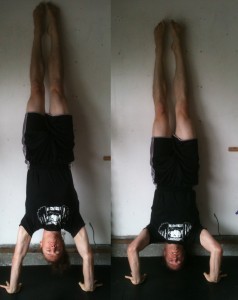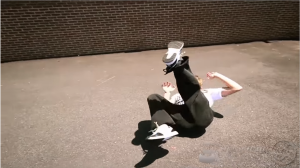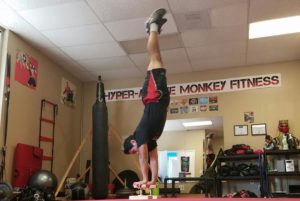There is a lot going on here in this message.
First, here are details about the interviews included in the Hand Balancing Mastery Course.
I conducted three interviews with hand balancing experts to see how they trained, what there thoughts were on the subject, and everything else. We went from beginning to advanced stuff.
Jim Bathurst is the first one. One of the main things we covered was how to mix weight training and hand balancing successfully. If you‘ve seen his site, Beast Skills, then you know what this man is capable of. I‘m talking planches, and real one-arm chinnups. But that’s only scratches the surface.
Ed Baran came next. Ed joined an Adult Gymnastic class for the first time at the age of 35 (you know the age when most other people give up on all physical activity). We went over a lot but had many tips on getting the straight body style of handstands like kicking up in the hollow position and more.
And last but not least is Mark Reifkind. Mark was a former all star gymnast who was on the path for Olympic Gold had it not been for debilitating injuries. If you want to learn what it takes to compete on that level you need to hear this.
It was good to hear three different people because each one had there own take on the best way to go after these goals. I took a lot from each one to incorporate in my own training and you can do the same.
Now, you may have been wondering what’s up with the subject line.
It just so happens that the Lost Art of Hand Balancing T-Shirt is now available. You can check it out here: Lost Art of Hand Balancing T-Shirt. But don’t order yours right now.
Here’s why.
In addition to all the great information inside the course I will be giving away a few fast-action bonuses for those that act quick in claiming their copy. One of which happens to be a few T-shirts.
The official launch date is the 21st but here is how you can get in even earlier. I have set up a VIP list that will get early access to the Hand Balancing Mastery Course and snap up the extra bonuses.
Go to Hand Balancing VIP List to sign up.
Look for a great tip on hand balancing from the course coming at you this weekend.
Good Luck and Good Hand Balancing,
Logan Christopher
P.S. Don’t forget the contest is still in effect but closes up this Monday. Get your success story in and win. Details can be found on the blog at the Lost Art of Hand Balancing Blog










